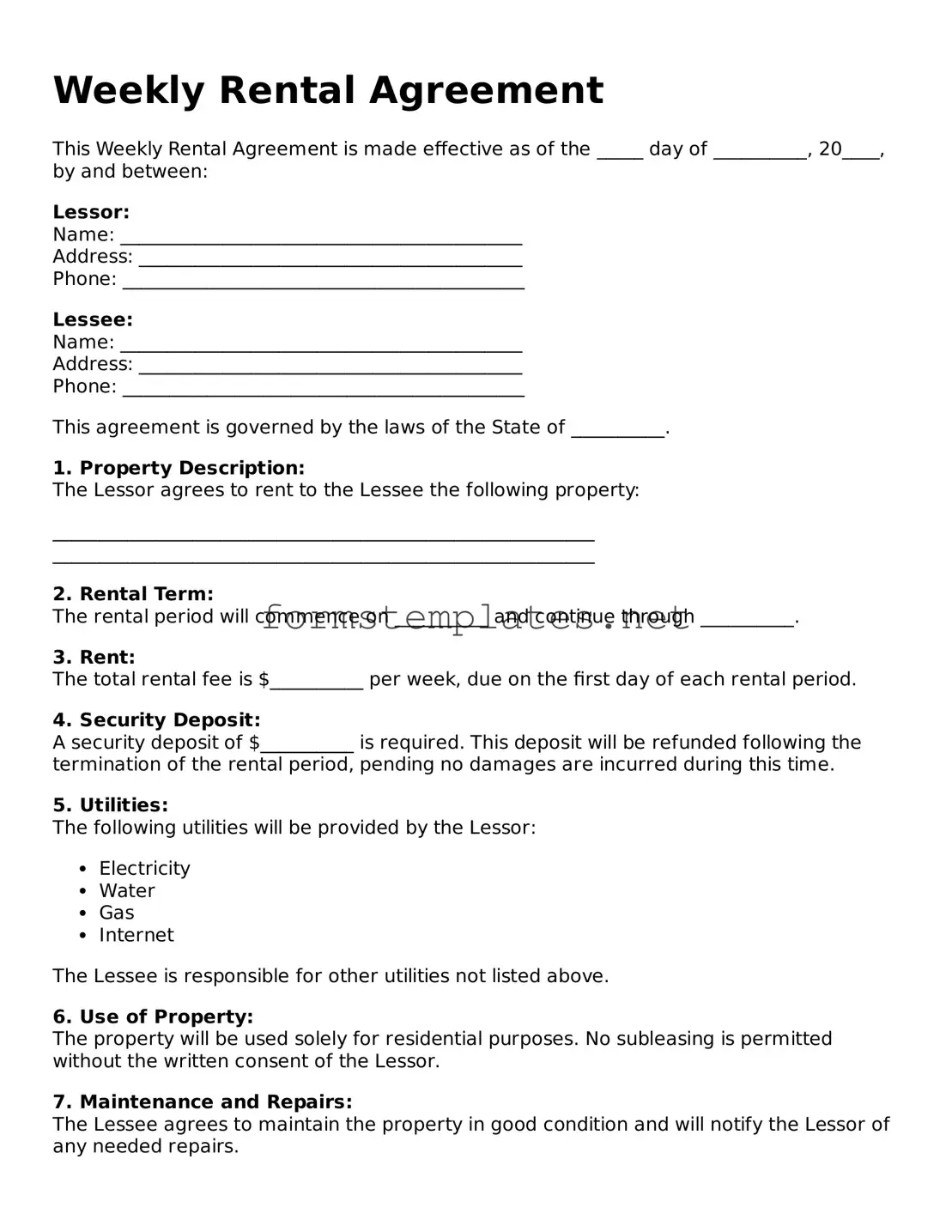Weekly Rental Agreement
This Weekly Rental Agreement is made effective as of the _____ day of __________, 20____, by and between:
Lessor:
Name: ___________________________________________
Address: _________________________________________
Phone: ___________________________________________
Lessee:
Name: ___________________________________________
Address: _________________________________________
Phone: ___________________________________________
This agreement is governed by the laws of the State of __________.
1. Property Description:
The Lessor agrees to rent to the Lessee the following property:
__________________________________________________________
__________________________________________________________
2. Rental Term:
The rental period will commence on __________ and continue through __________.
3. Rent:
The total rental fee is $__________ per week, due on the first day of each rental period.
4. Security Deposit:
A security deposit of $__________ is required. This deposit will be refunded following the termination of the rental period, pending no damages are incurred during this time.
5. Utilities:
The following utilities will be provided by the Lessor:
- Electricity
- Water
- Gas
- Internet
The Lessee is responsible for other utilities not listed above.
6. Use of Property:
The property will be used solely for residential purposes. No subleasing is permitted without the written consent of the Lessor.
7. Maintenance and Repairs:
The Lessee agrees to maintain the property in good condition and will notify the Lessor of any needed repairs.
8. Termination:
Either party may terminate this agreement with a written notice of _____ days.
Signatures:
Lessor: _____________________________ Date: ___________
Lessee: _____________________________ Date: ___________
